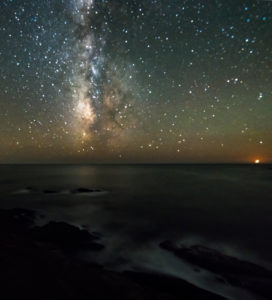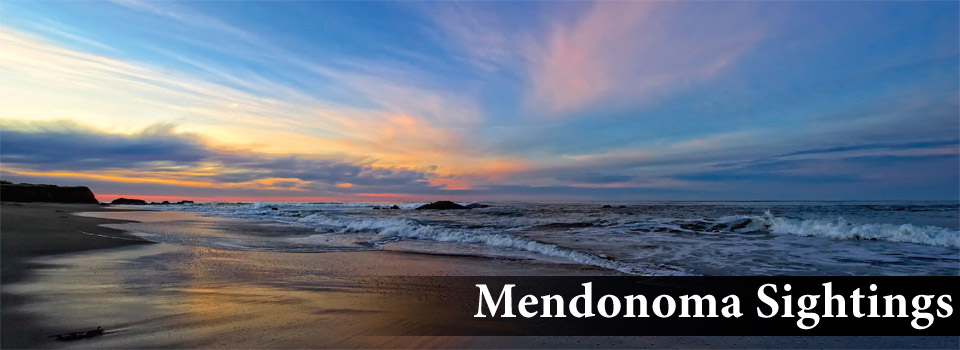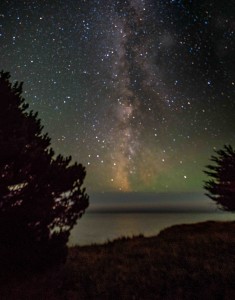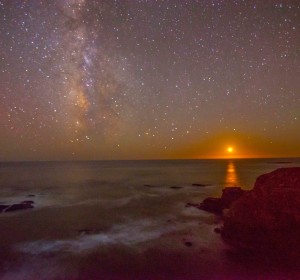Paul Brewer photographed this majestic sight - the Milky Way. See the setting moon on the right.
 We are lucky to have a lack of light pollution on the Mendonoma coast. May it ever be so!
We are lucky to have a lack of light pollution on the Mendonoma coast. May it ever be so!
I asked Paul how he photographed this. He wrote, "Simple answer, long exposure (20-30 seconds) at high ISO and maximum aperature available on a wide angle lens, with tripod."
For those interested in a more detail explanation, Paul wrote, "Two parts to the answer. To shoot the milky-way like this you need to gather light for an extended time. The time depends on the aperature of the lens. Fast lenses with F 2.8 or faster is preferred. Mine is only
f/4 and would benefit with a faster lens. The faster the lens the
shorter the exposure or lower the ISO to obtain good results. Low ISO
and short exposure time both reduce the noise in the photo. The wider
the lens the longer you can expose without the stars becoming streaks
instead of points. Rule of thumb is divide 500 by the focal length of
the lens. In my case 500 divided by 16mm allows a 30 second exposure
which is what I used. My settings were ISO 4000 F/4 for 30 seconds.
You also need to be locked down on a tripod for those long
exposures, preferably shooting with mirror up on a DSLR to reduce
vibration. It is also helpful to shoot with long exposure noise
reduction turned on."
Thanks to Paul for allowing me to share his photo with you here, and for the photography lesson. To see more of Paul's nature photography, here is his website: http://www.capturingnatureswonders.com/


